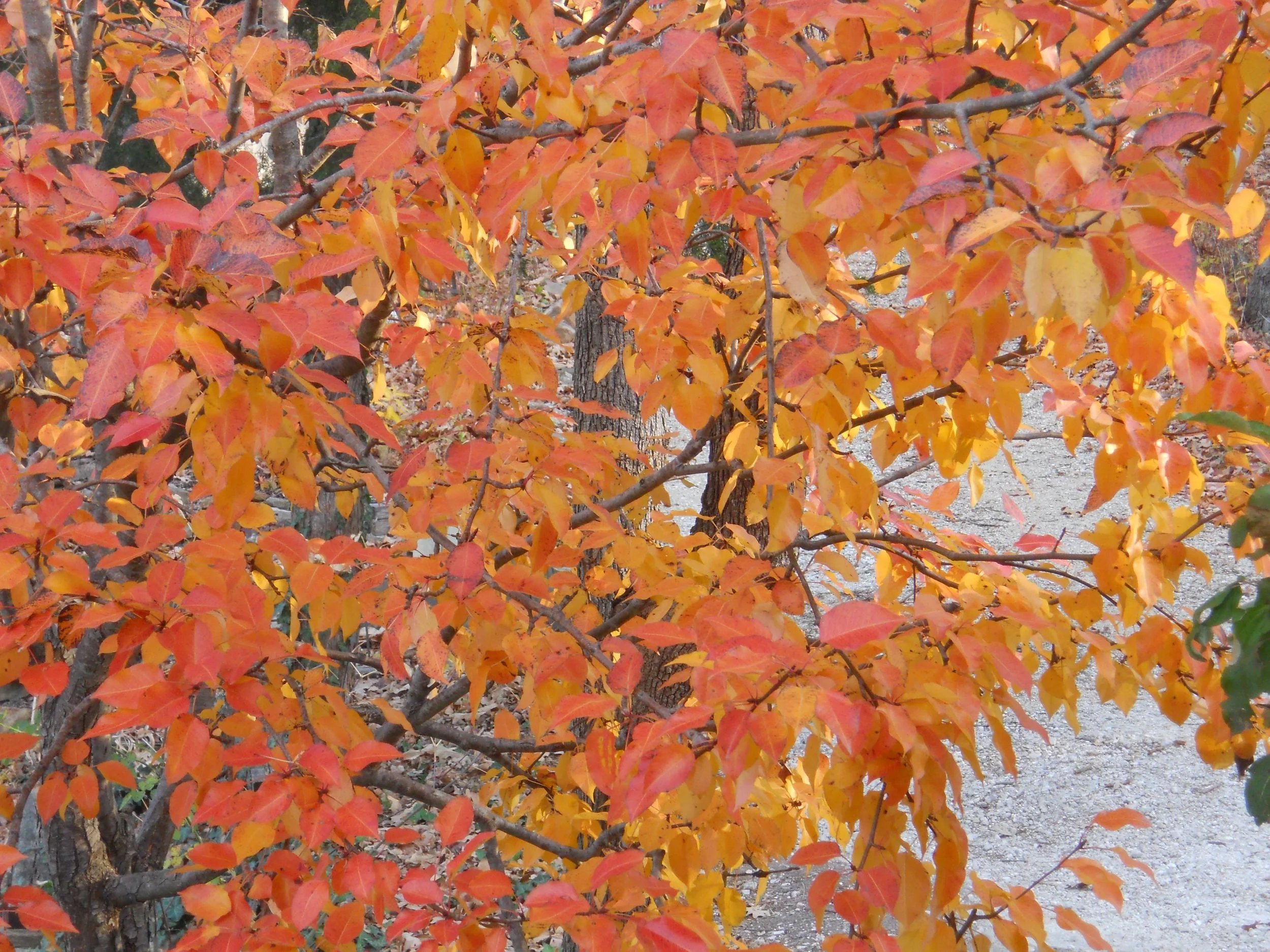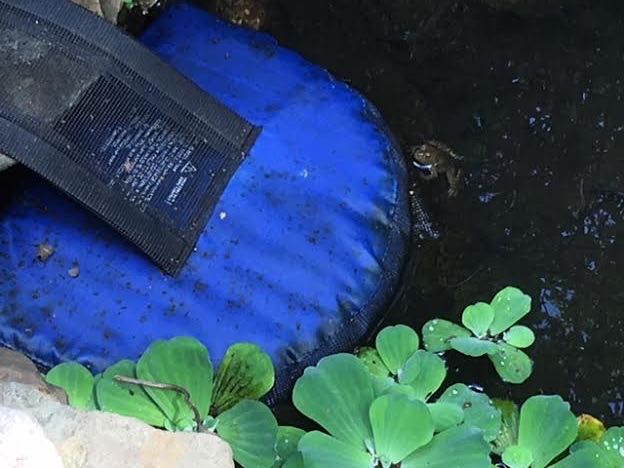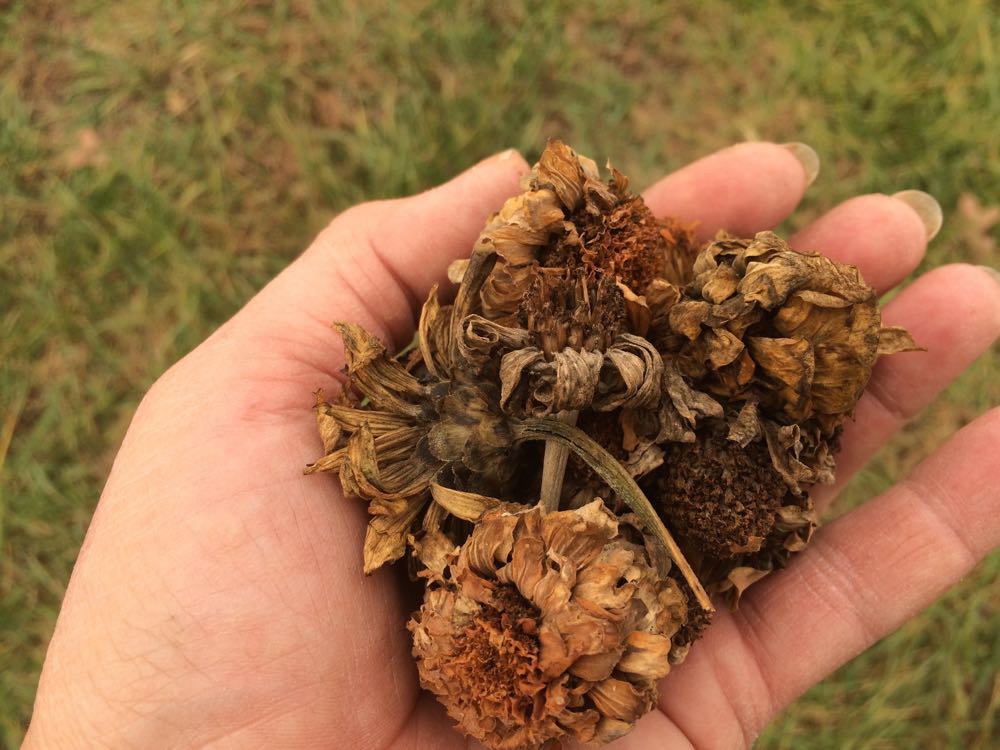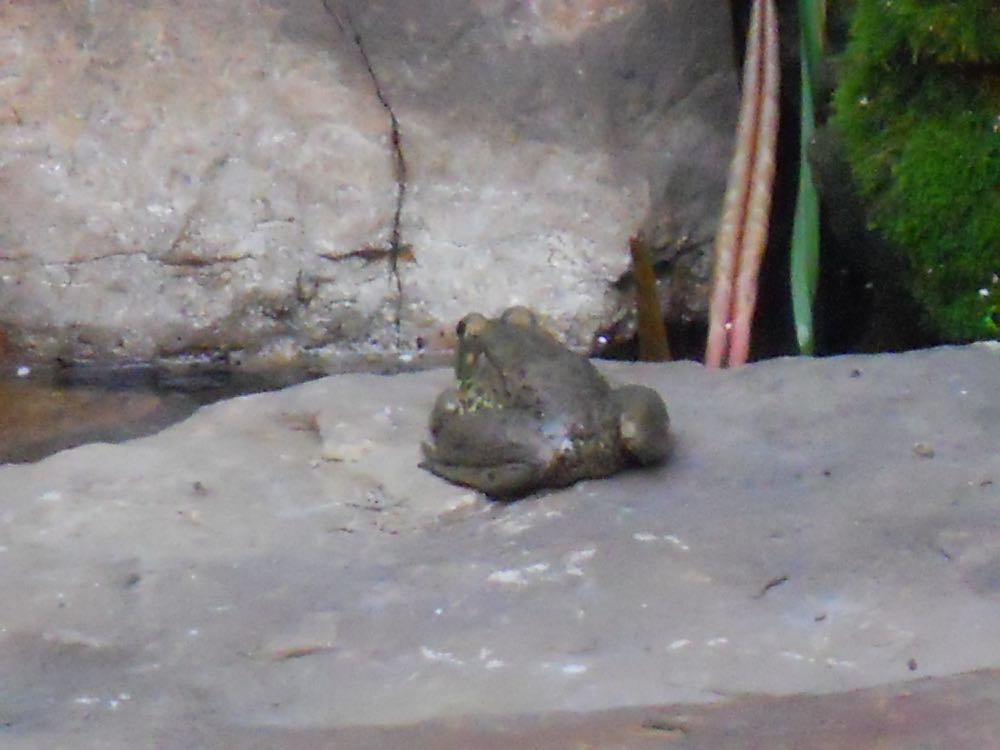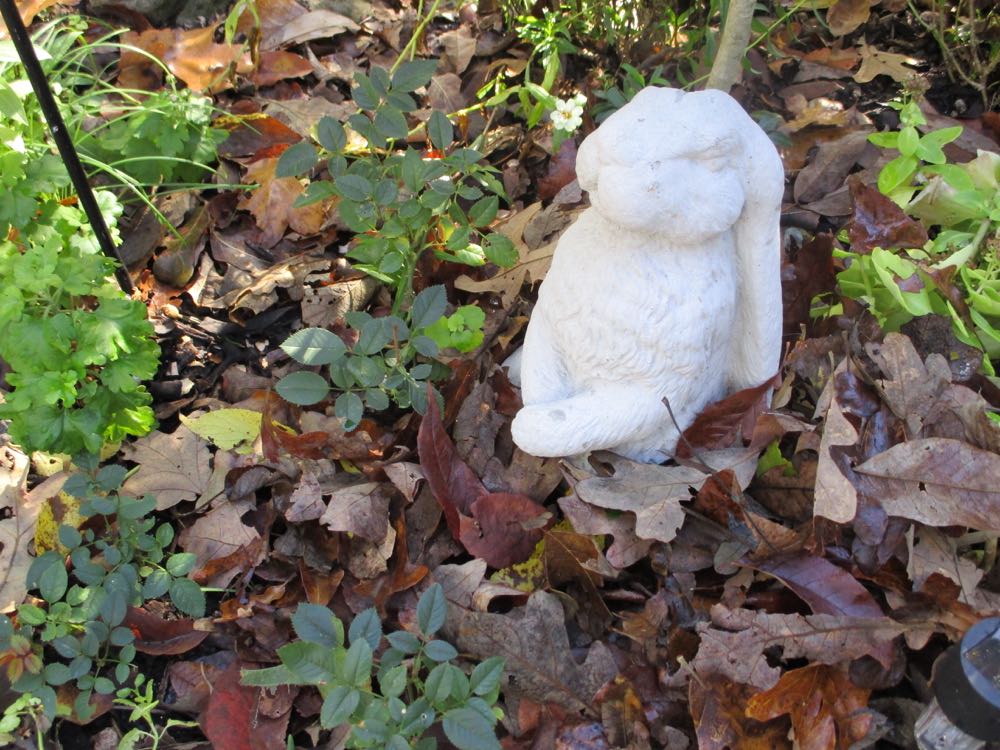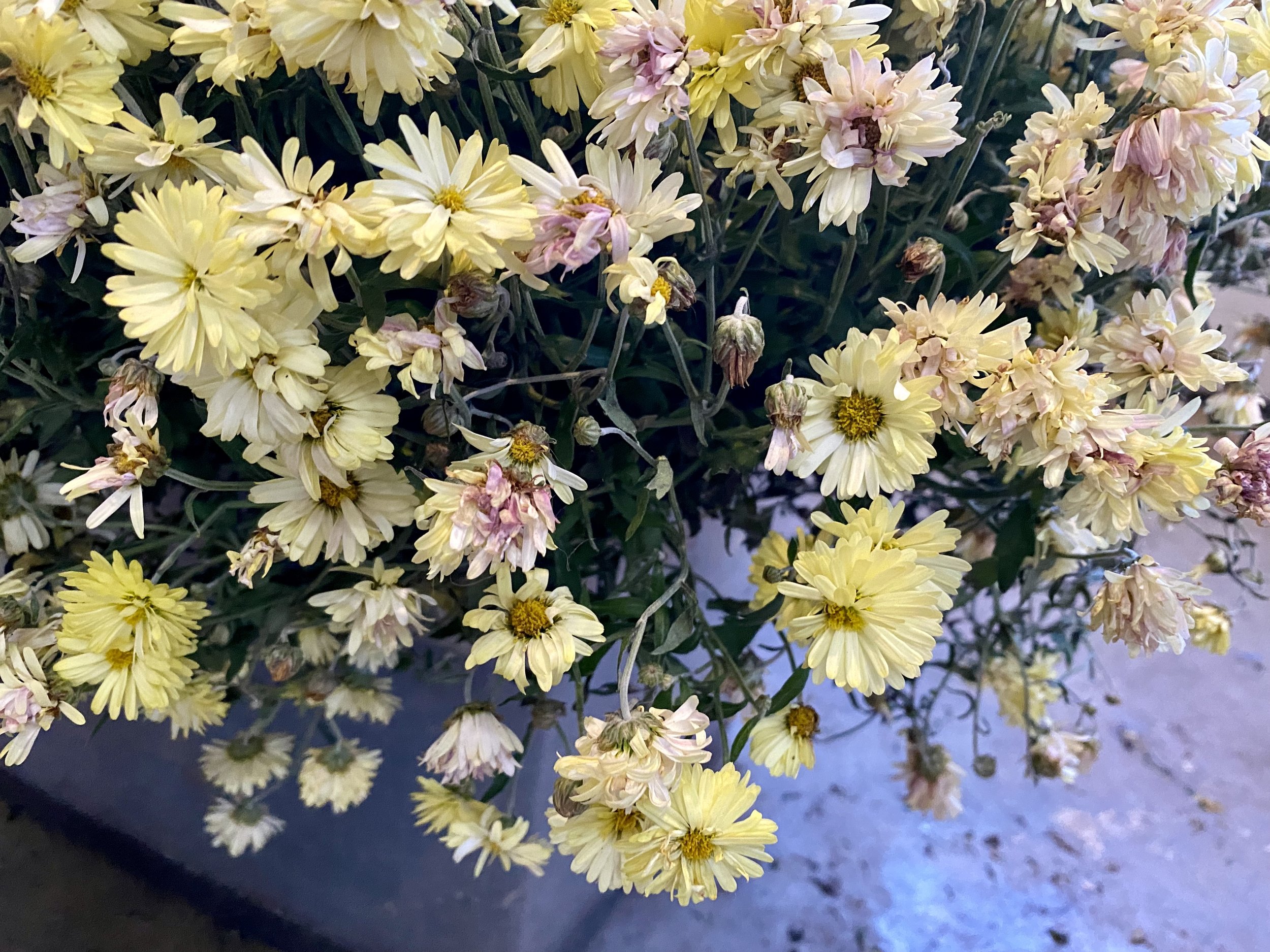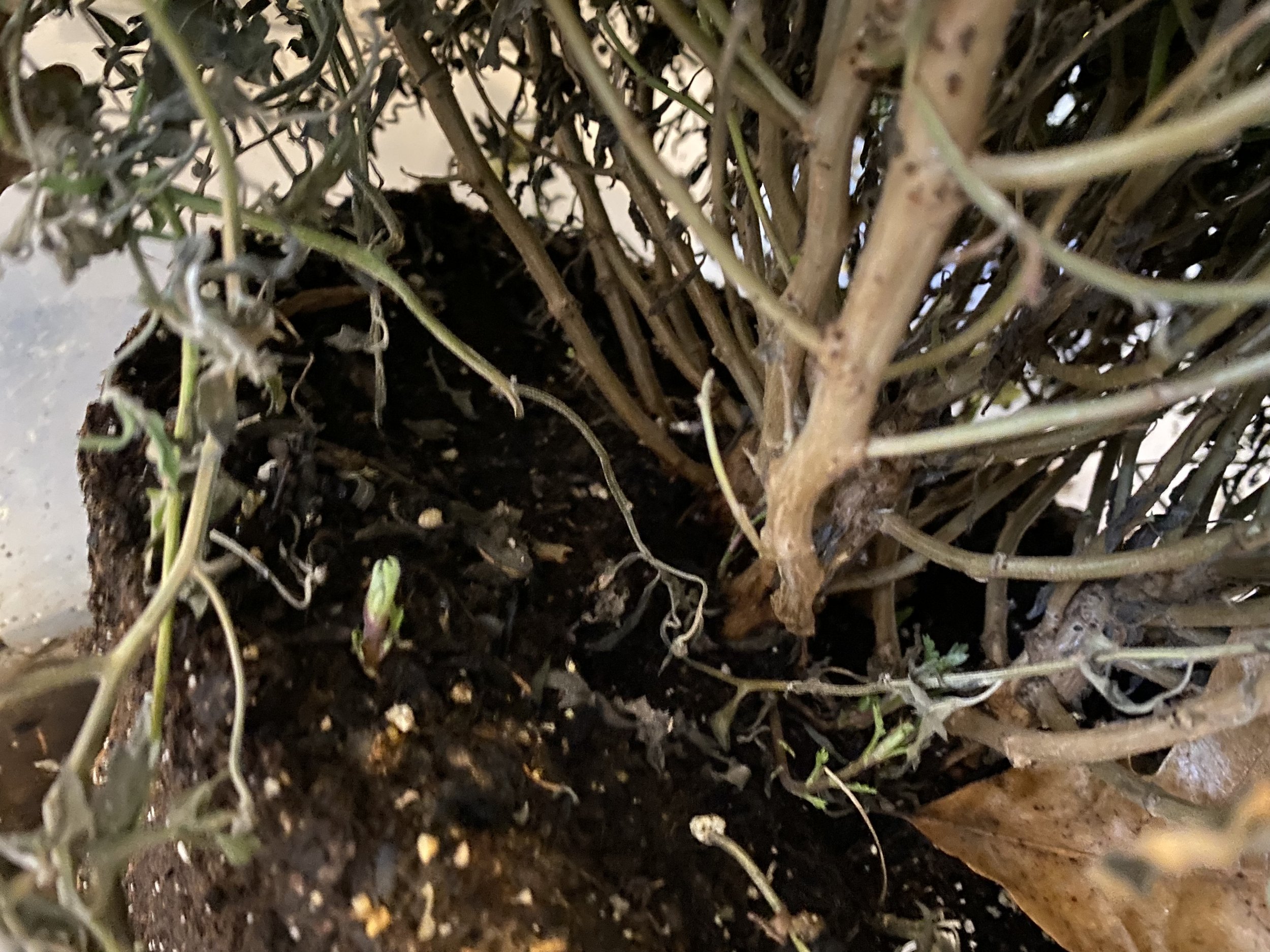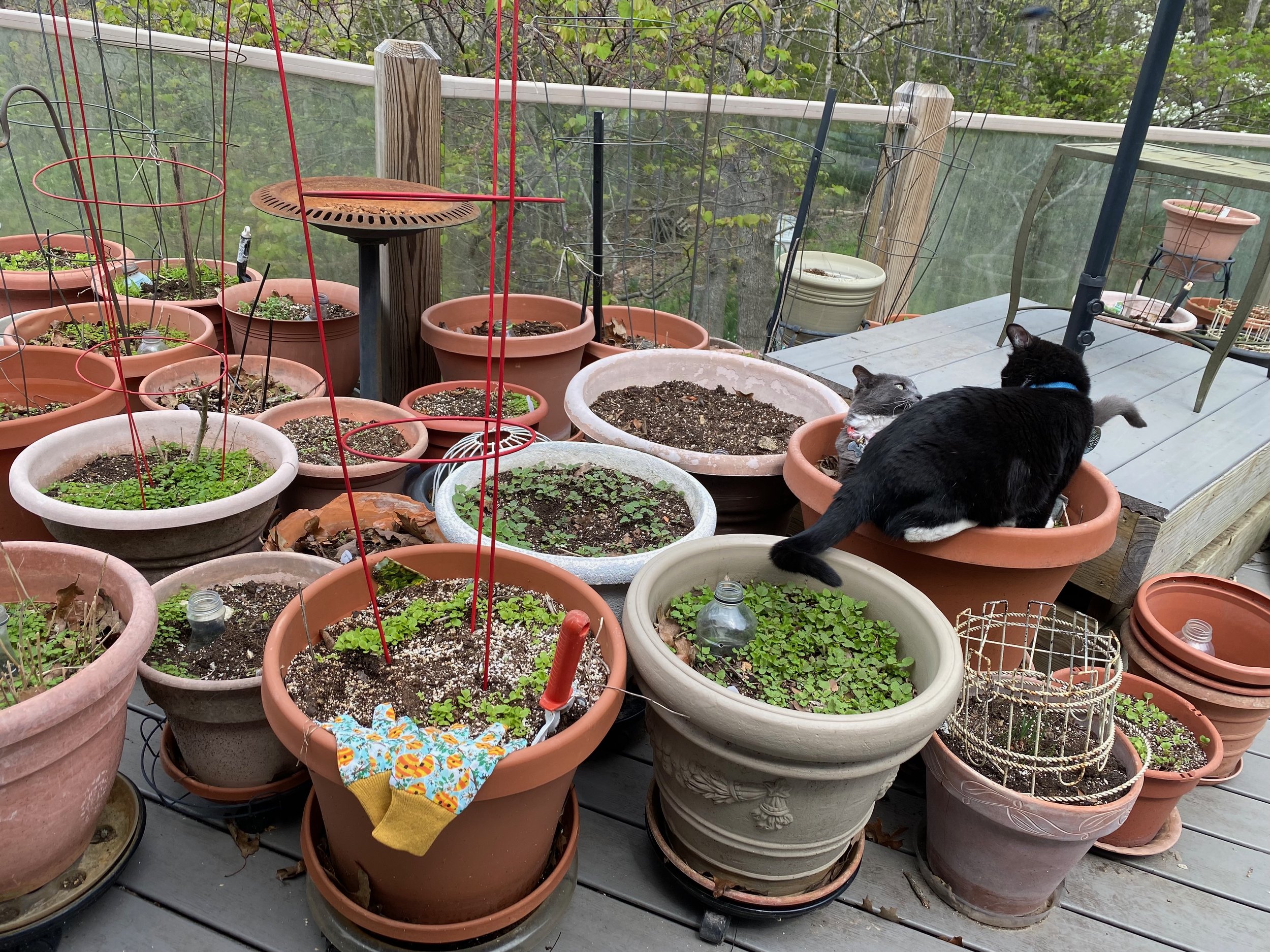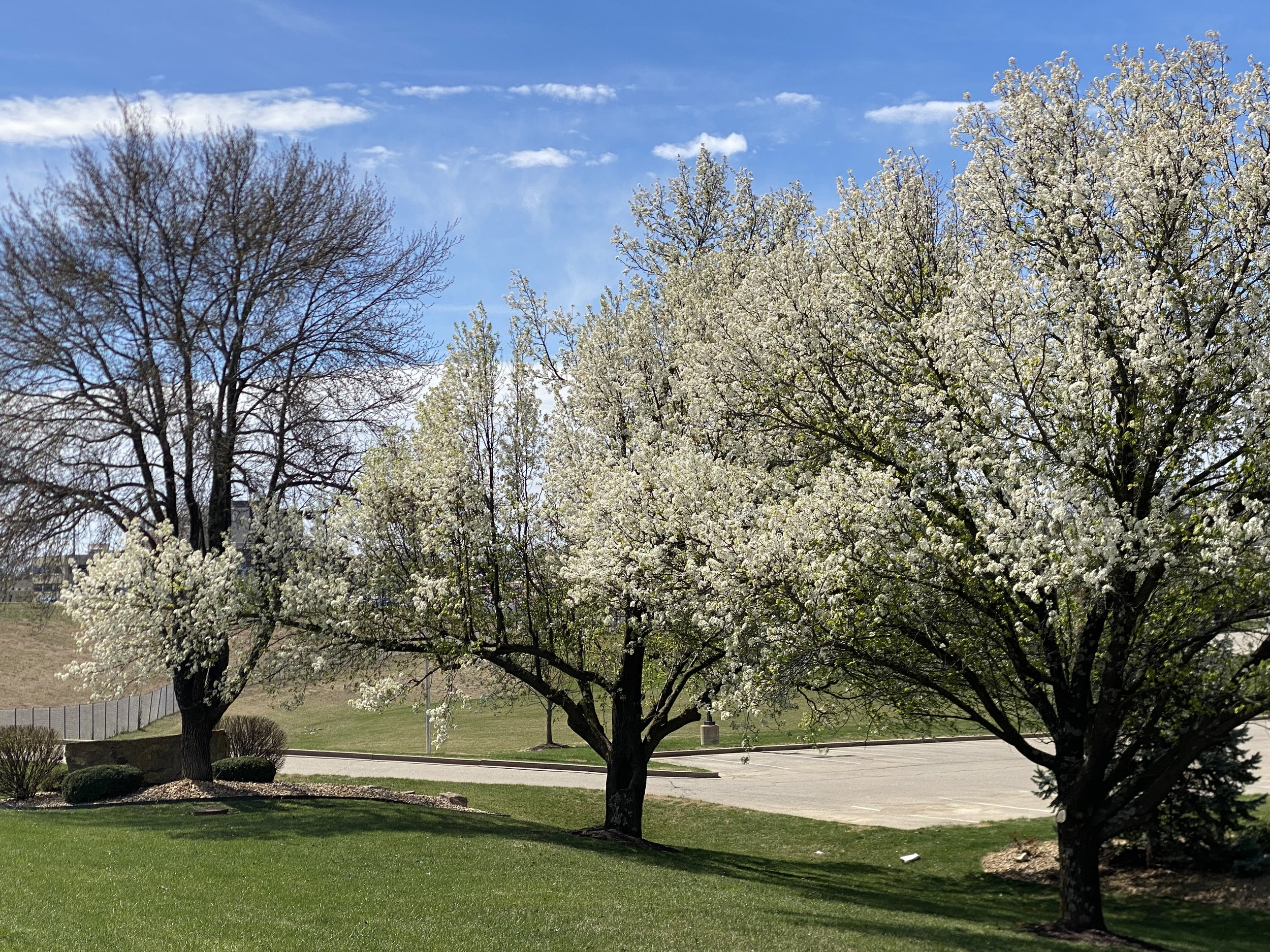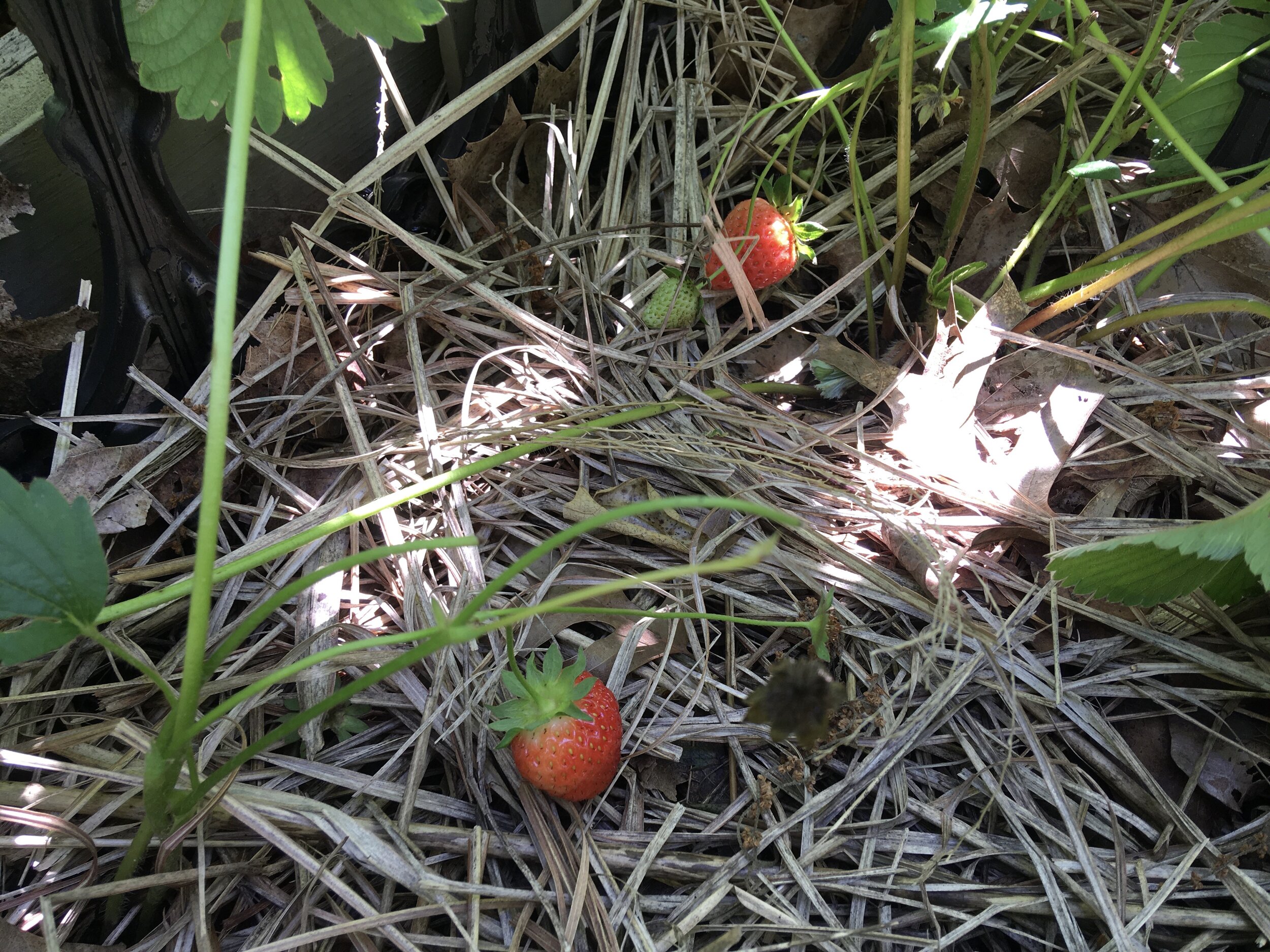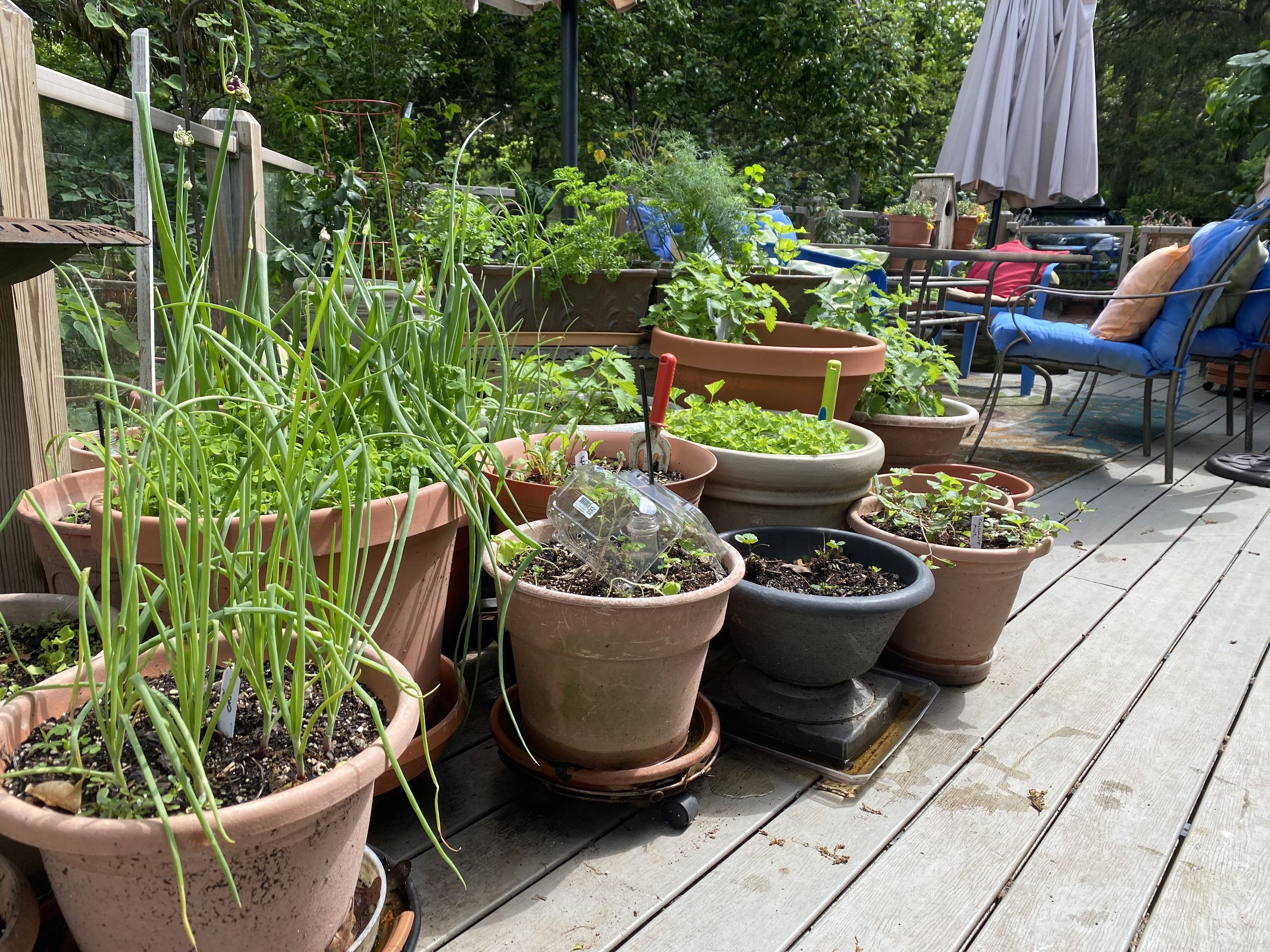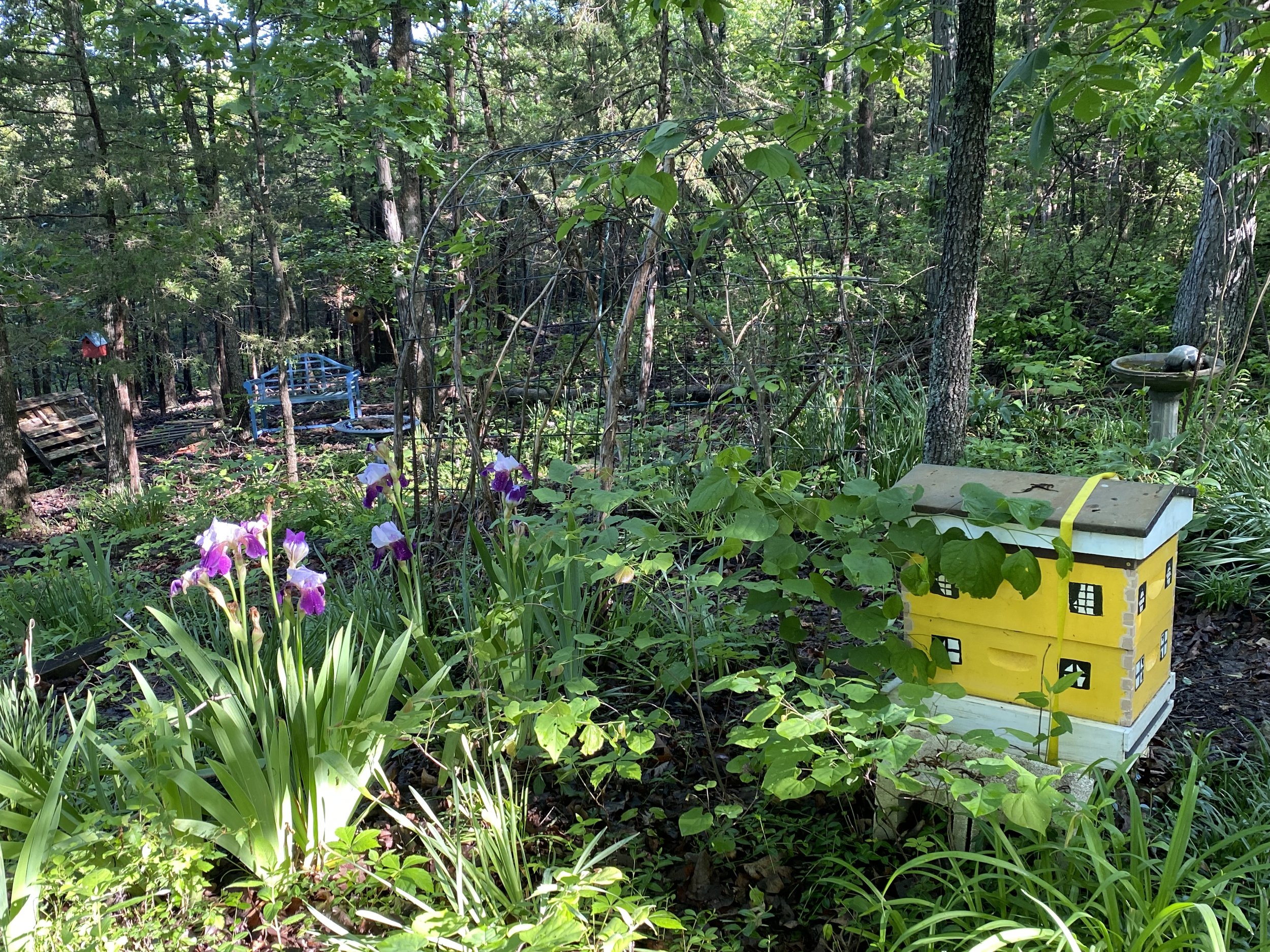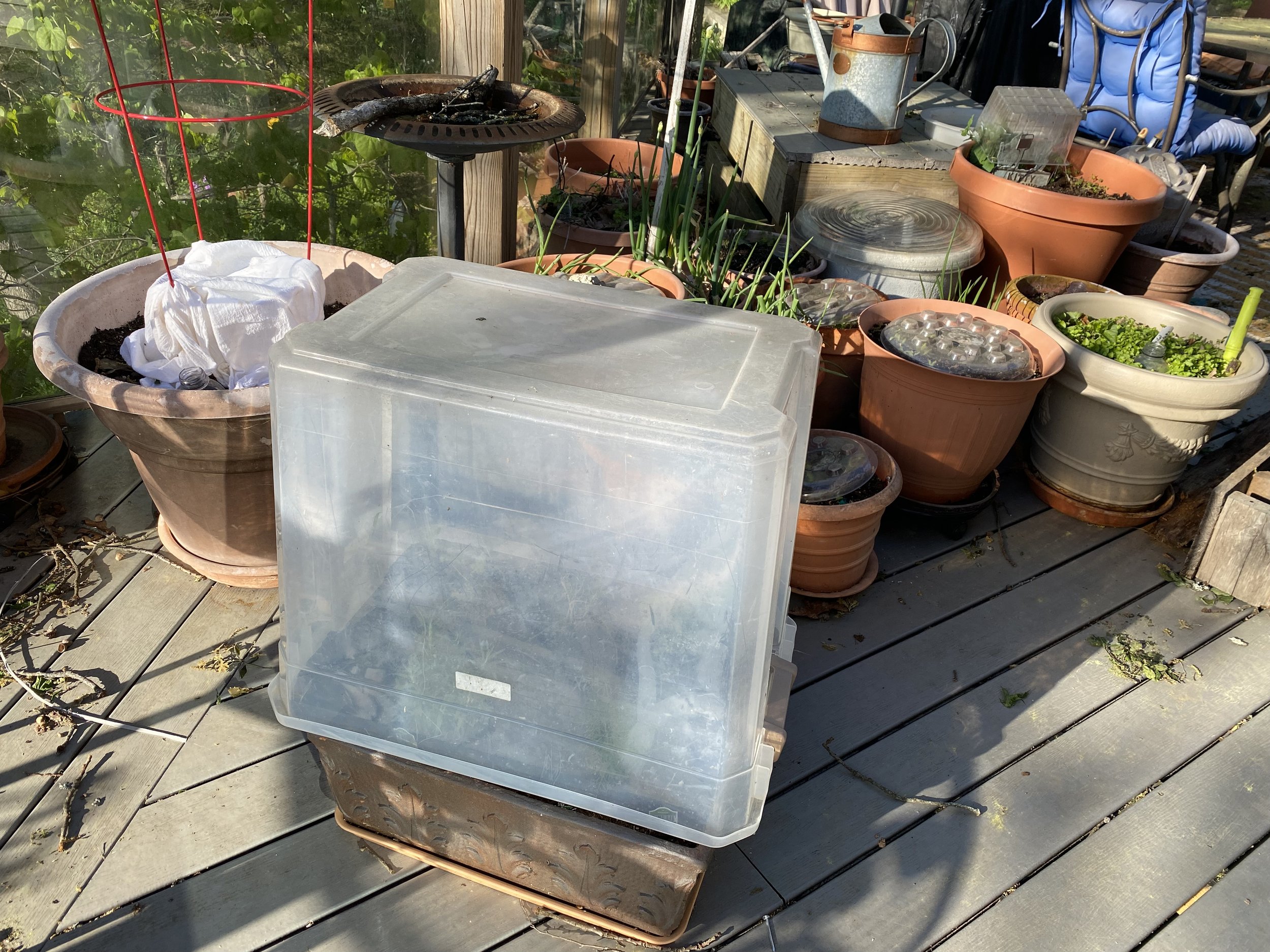Lily Pad 2.0
/Norman the frog hanging on to the side of the blue escape shelf now in one of my ponds. (Photo by Charlotte Ekker Wiggins)
Lily Pad 2.0
One of my favorite sounds to hear in my garden is that of frogs. I love the deep resounding notes of the bullfrogs and the melodious drawn out chirping of spring peepers before they jump back into the water or hide under water lilies as I walk by.
As I was going to a yard sale last year, I spotted something I thought my frogs might use, a blue escape shelf normally placed in swimming pools. If a wild animal falls into a pool there is no way for it to swim out safely so these escape shelves are designed to attach to a pool corner for a safe exit.
I don’t have a pool but I do have a small pond so I installed the shelf earlier this spring thinking it might come in handy if a turtle or rabbit fell in.
I now have two “frogs” in my little pond, one on each side of the tiny watering hole. (Photo by Charlotte Ekker Wiggins)
For the past 3 months, the escape shelf has been occupied by a young bull frog. All day, actually, from when I go out in the morning to feed the goldfish to before sunset when I wrap up garden work.
I walk by him a good few dozen times, dragging all manner of items - shovels, pick axes, boxes of plants, water in buckets, swinging the garden instruments over the pond to clear the small walking path. The frog - I have named him Norman - sits on his new blue lily pad, unflinching.
A few times he may reverse direction, or scoot up closer to the edge of the escape shelf but rarely does he jump into the pond.
This is typically how Norman spends his days in my pond, sitting on the blue escape. (Photo by Charlotte Ekker Wiggins)
I stopped the other day to say good morning as I was feeding the fish. No response. No movement, his little green back still turned towards me as he sat.
One of my cats prefers to watch a mouse game on my cell phone and birds singing on my laptop. I suppose it only makes sense that now a frog would prefer an escape shelf to the traditional lily pad.
Charlotte
